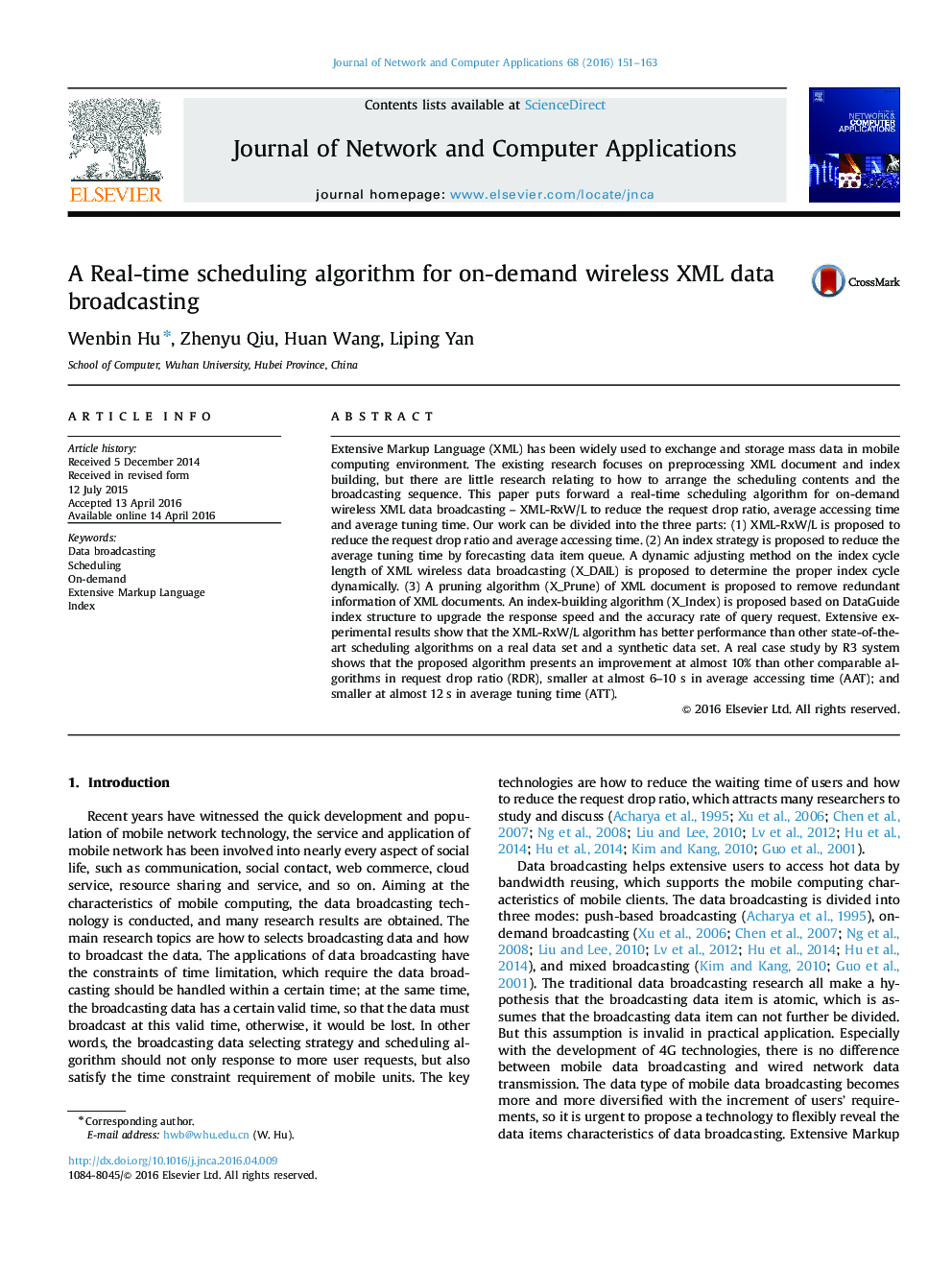| Article ID | Journal | Published Year | Pages | File Type |
|---|---|---|---|---|
| 459607 | Journal of Network and Computer Applications | 2016 | 13 Pages |
•XML-RxW/L is proposed to reduce the request drop ratio and average accessing time.•An index strategy is proposed to reduce the average tuning time.•A dynamic adjusting method is proposed to determine the proper index cycle.•X_Prune is proposed to remove redundant information of XML document.•X_Index is proposed to upgrade the repose speed and the accuracy rate of query request.
Extensive Markup Language (XML) has been widely used to exchange and storage mass data in mobile computing environment. The existing research focuses on preprocessing XML document and index building, but there are little research relating to how to arrange the scheduling contents and the broadcasting sequence. This paper puts forward a real-time scheduling algorithm for on-demand wireless XML data broadcasting – XML-RxW/L to reduce the request drop ratio, average accessing time and average tuning time. Our work can be divided into the three parts: (1) XML-RxW/L is proposed to reduce the request drop ratio and average accessing time. (2) An index strategy is proposed to reduce the average tuning time by forecasting data item queue. A dynamic adjusting method on the index cycle length of XML wireless data broadcasting (X_DAIL) is proposed to determine the proper index cycle dynamically. (3) A pruning algorithm (X_Prune) of XML document is proposed to remove redundant information of XML documents. An index-building algorithm (X_Index) is proposed based on DataGuide index structure to upgrade the response speed and the accuracy rate of query request. Extensive experimental results show that the XML-RxW/L algorithm has better performance than other state-of-the-art scheduling algorithms on a real data set and a synthetic data set. A real case study by R3 system shows that the proposed algorithm presents an improvement at almost 10% than other comparable algorithms in request drop ratio (RDR), smaller at almost 6–10 s in average accessing time (AAT); and smaller at almost 12 s in average tuning time (ATT).
